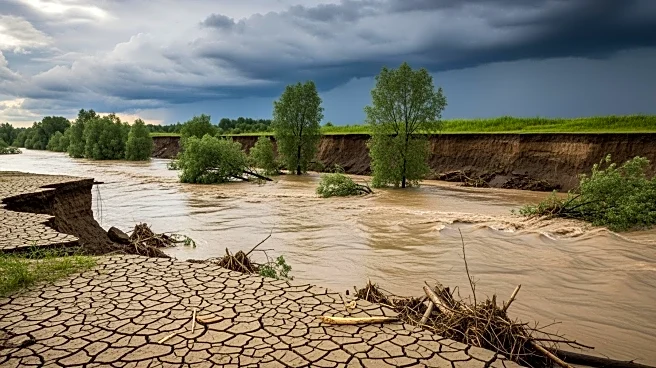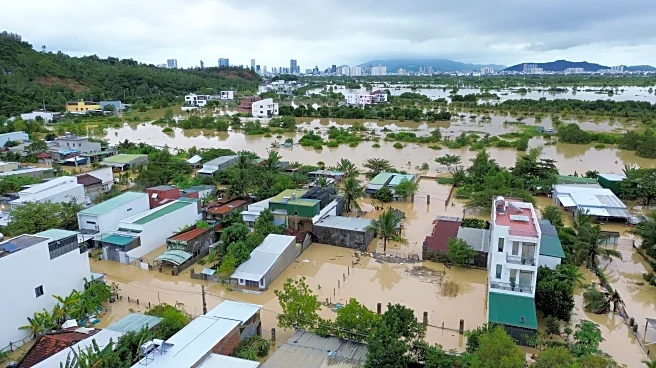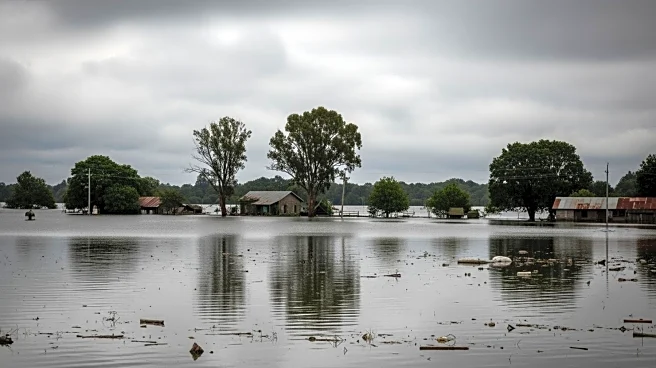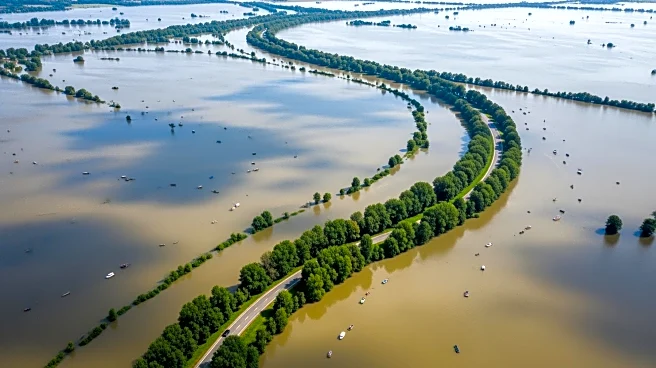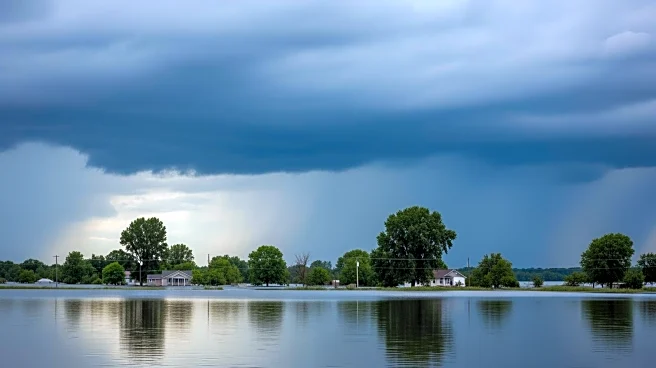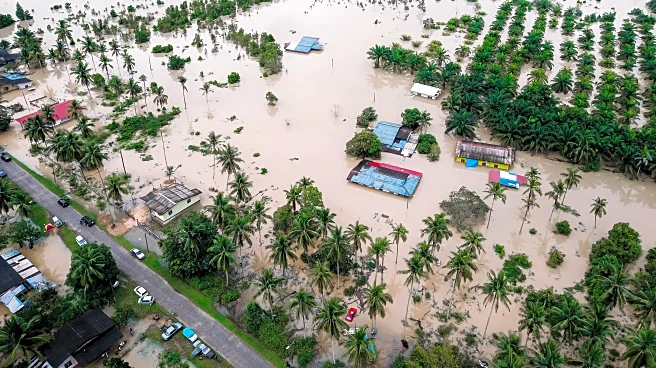What's Happening?
Vietnam has been severely affected by heavy rains leading to widespread flooding and landslides, resulting in significant human and economic losses. The death toll in Vietnam has reached 91, with 11 individuals
reported missing. The floods have impacted a 500-mile stretch from Quang Tri to Lam Dong provinces, including the highlands. Dak Lak province, a major coffee-growing region, has been the worst hit, with 63 fatalities primarily due to drowning. The floods have submerged coffee farms and caused an estimated $500 million in damage. Helicopters have been deployed to deliver food and aid supplies and assist in evacuations. The United Nations estimates the total economic damage from the recent typhoons at $1.2 billion, with over half a million homes damaged and hundreds of thousands evacuated. South Korea has pledged $1 million to support Vietnam in aiding displaced communities.
Why It's Important?
The flooding in Vietnam highlights the increasing vulnerability of Southeast Asian countries to climate-related disasters. Vietnam, one of the world's most flood-prone countries, has nearly half its population living in high-risk areas. The intensifying storms and rainfall, attributed to climate change, are causing more frequent and destructive floods and landslides. The economic impact is substantial, with damage to infrastructure, homes, and agricultural sectors, particularly coffee farming, which is vital to Vietnam's economy. The international response, including South Korea's financial aid, underscores the need for global cooperation in disaster relief and climate adaptation strategies. The situation calls for urgent measures to enhance resilience and preparedness against future climate-related events.
What's Next?
Vietnam's weather agency has warned of a new tropical depression forming, which could bring further adverse weather conditions later in the week. Continued rainfall poses ongoing risks, and authorities are likely to maintain evacuation and relief efforts. The international community may increase support to assist Vietnam in recovery and rebuilding efforts. Long-term strategies may involve strengthening infrastructure, improving early warning systems, and implementing sustainable land management practices to mitigate future disasters. The focus will be on enhancing climate resilience and adapting to the changing environmental conditions.
Beyond the Headlines
The floods in Vietnam reflect broader environmental challenges faced by Southeast Asia due to climate change. The increasing frequency and intensity of natural disasters in the region highlight the urgent need for comprehensive climate policies and international collaboration. Ethical considerations arise regarding the responsibility of developed nations to support vulnerable countries in adapting to climate impacts. The situation also raises questions about sustainable development and the balance between economic growth and environmental protection. Long-term shifts may include changes in agricultural practices, urban planning, and community engagement in disaster preparedness.
